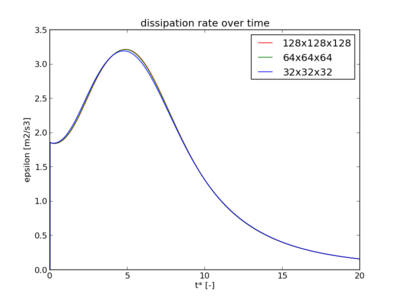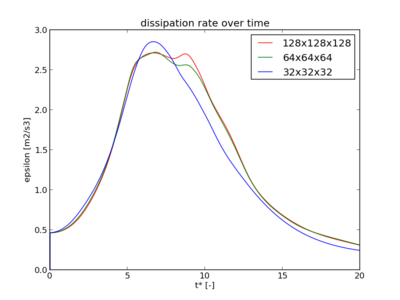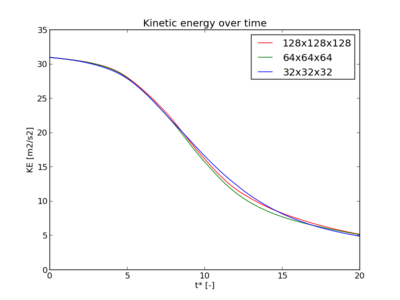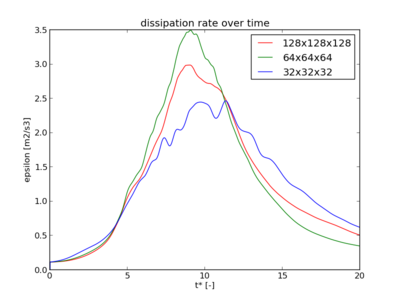Difference between revisions of "Step 2"
(→Step 2 Description) |
(→Step 2 Description) |
||
| Line 29: | Line 29: | ||
Some kerosene droplets are added to this premixing. | Some kerosene droplets are added to this premixing. | ||
| − | [[File:epsilon_Re100.png|400px|epsilon | + | [[File:epsilon_Re100.png|400px|epsilon with Re = 100]] |
| − | [[File:KE_Re100.png|400px|KE | + | [[File:KE_Re100.png|400px|KE with Re = 100]] |
| − | [[File:epsilon_Re200.png|400px|epsilon | + | [[File:epsilon_Re200.png|400px|epsilon with Re = 200]] |
| − | [[File:KE_Re200.png|400px|KE | + | [[File:KE_Re200.png|400px|KE with Re = 200]] |
| − | [[File:epsilon_Re400.png|400px|epsilon | + | [[File:epsilon_Re400.png|400px|epsilon awith Re = 400]] |
| − | [[File:KE_Re400.png|400px|KE | + | [[File:KE_Re400.png|400px|KE with Re = 400]] |
| − | [[File:epsilon_Re800.png|400px|epsilon | + | [[File:epsilon_Re800.png|400px|epsilon with Re = 800]] |
| − | [[File:KE_Re800.png|400px|KE | + | [[File:KE_Re800.png|400px|KE with Re = 800]] |
| − | [[File:epsilon_Re1600.png|400px|epsilon | + | [[File:epsilon_Re1600.png|400px|epsilon with Re = 1600]] |
| − | [[File:KE_Re1600.png|400px|KE | + | [[File:KE_Re1600.png|400px|KE with Re = 1600]] |
= Aside Suggestion = | = Aside Suggestion = | ||
Revision as of 17:17, 13 August 2020
Step 2 Description
The next step in the benchmark is to simulate the Taylor-Green Vortex configuration in 3-D, still for a single-component incompressible flow. For this configuration, a reference solution obtained with a pseudo-spectral solver is available in the scientific literature[1] and can be used for validation by a direct comparison.
The domain size has been set to in each direction, where is an arbitrarily-chosen reference length scale for dimensional codes. As in the previous section, periodic boundary conditions are used in all three spatial directions.
The initial conditions for 3-D TGV are given by the following set of equations:
The reference velocity magnitude is set again to . The desired Reynolds number is again , as in the previous section, since this value has been used as well in the reference study employed for comparison[1]. To obtain the proper value of Re, the kinematic viscosity is set once again to . With this set of parameters, the reference time scale is . The flow simulation must be carried out for a physical time of .
Regarding spatial discretization, a resolution of at least 512 nodes (or cells) in each direction is recommended. This value leads to an over-resolved simulation during the first few but is necessary to capture properly the transition to turbulence that should occur between 10 and 15 . As a point of comparison, the reference solution from[1] has been obtained with a spectral code on a grid. The timestep should be chosen to ensure that the maximum values of the Courant-Friedrichs-Lewy (CFL) and Fourier (Fo) numbers remain below and , respectively. This values are actually quite conservative since the focus of this study is set on accuracy comparisons and not on pure computational performance.
2D Large-Eddy Simulation, injection of a premixed kerosene/air mixture on the left with a high level of turbulence. Some kerosene droplets are added to this premixing.
Aside Suggestion
Check mesh convergence and time integration independence.
Check that
References
- van Rees WM, Leonard A, Pullin D, Koumoutsakos P. A comparison of vortex and pseudo-spectral methods for the simulation of periodic vortical flows at high reynolds numbers. J Comput Phys. 2011;230(8):2794-2805.
- Carton de Wiart C, Hillewaert K, Duponcheel M, Winckelmans G. Assessment of a discontinuous galerkin method for the simulation of vortical flows at high reynolds number. Int J Numer Meth Fluids. 2014;74(7):469-493.
- Duponcheel M, Orlandi P, Winckelmans G. Time-reversibility of the euler equations as a benchmark for energy conserving schemes. J Comput Phys. 2008;227(19):8736-8752.
- Bricteux, L, Zeoli, S, Bourgeois, N. Validation and scalability of an open source parallel flow solver. Concurrency Computat: Pract Exper. 2017; 29:e4330. https://doi.org/10.1002/cpe.4330









